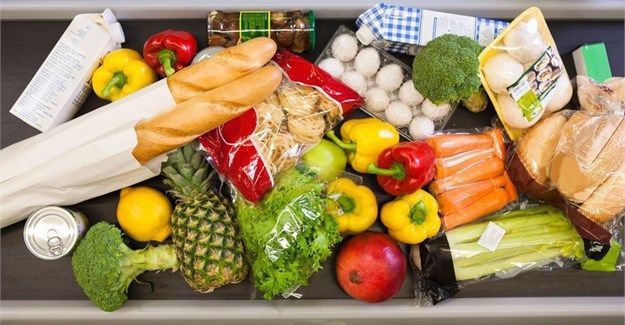
Subscribe & Follow
Global food prices fall for the first time in 12 months
The FAO Food Price Index averaged 124.6 points in June 2021, down 2.5% from May, but still 33.9% higher than its level in the same period last year. The decline in June marked the first drop in the Index following twelve consecutive monthly increases.

The FAO Food Price Index tracks changes in the international prices of the most globally traded food commodities. The drop in June reflected declines in the prices of vegetable oils, cereals and, though more moderately, dairy products, which more than offset generally higher meat and sugar quotations.
The vegetable oil price index fell by 9.8% in the month, marking a four-month low. The sizeable month-on-month drop mainly reflects lower international prices of palm, soy and sunflower oils.
The cereal price index fell by a more moderate 2.6% from May, but remained 33.8% higher than its value in June 2020. International maize prices dropped by 5.0%, led by falling prices in Argentina due to increased supplies from recent harvests as a result of higher-than-earlier expected yields.
International wheat prices declined slightly by 0.8% in June, with a favourable global outlook supported by improved production prospects in many key producers outweighing most of the upward pressure from dry conditions affecting crops in North America.
The dairy price index fell by 1% to 119.9 points in June. International quotations for all dairy products represented in the index fell, with butter registering the highest drop, underpinned by a fast decline in global import demand and a slight increase in inventories, especially in Europe.
The sugar price index moved against the overall food price trend, rising by 0.9% month-on-month, marking the third consecutive monthly increase and reaching a new multi-year high. Uncertainties over the impact of unfavourable weather conditions on crop yields in Brazil, the world's largest sugar exporter, exerted upward pressure on prices.
The meat price index also rose by 2.1% over the month to June, continuing the increases for the ninth consecutive month and placing the index 15.6% above its value in the corresponding month last year, but still 8.0% below its peak reached in August 2014.
World cereal inventories expected to rise
FAO’s forecast for global cereal production in 2021 has been lowered marginally to 2,817 million tonnes, according to the latest Cereal Supply and Demand Brief released today. However, the figure remains 1.7%, or 47.8 million tonnes, higher than in 2020, which would mark a new record high.
Forecasts for world coarse grains production have been cut back to 1,513 million tonnes, 3 million tonnes below last month’s expectation. A large cut to the Brazilian maize production forecast accounts for the bulk of the expected global decline, with prolonged periods of dry weather dragging down yield expectations.
World wheat output in 2021 has been lowered by 1 million tonnes to 784.7 million tonnes, still 1.2% higher year-on-year, as the dry weather conditions in the Near East cut back yield prospects.
By contrast, the forecast of global rice production in 2021 has undergone a slight upward adjustment since June, with a record of 519.5 million tonnes of rice now expected to be harvested in 2021, up 1.0% from 2020.
World cereal utilisation in 2021/22 has been lowered by 15 million tonnes from the previous month to 2 810 million tonnes, nevertheless still 1.5% higher than in 2020/21. The downward revision comes largely from lower-than-earlier-anticipated utilisation of maize in China for animal feed.
World cereal stocks by the close of seasons in 2021/22 are now forecast to rise above their opening levels for the first time since 2017/18, following a sharp upward revision to 836 million tonnes, up 2.4% from last year’s relatively tight level. Higher maize stocks foreseen in China account for the bulk of this month’s upward revision to world cereal inventories.
FAO’s latest forecast for world trade in cereals in 2021/22 has been raised slightly since June and now stands at a record 472 million tonnes, driven primarily by likely large maize purchases from China taking global maize trade to record levels.













